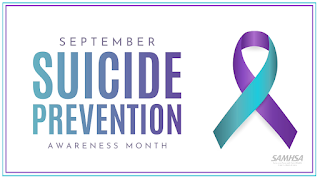Brain-Based Strategies for Emotional Regulation
This article from Edutopia contains some excellent suggestions to help build focus and engagement in the classroom. While it is geared towards students who have an Attention-Deficit/Hyperactivity Disorder (ADHD), these strategies could certainly be helpful for all learners.
One of my favorite suggestions in this article is the idea of teachers using "I Noticed" sheets to reinforce the positive aspects of a student's behavior during the day. While this isn't something you'd want to do every day for every student, there's a lot of power in occasionally letting that struggling learner know that you are paying attention to them and to the things that they are able to do well. Even as adults, we experience what I call the "warm fuzzies" when someone takes the time to recognize our efforts and hard work. Imagine the power that this could hold for a student with academic or behavioral challenges who may feel that he or she is unable to do anything right throughout the school day! Here's an example of this simple technique:
I also love the idea of having occasional whole class discussions about neurodiversity. While that may sound like a difficult topic, taking the opportunity to address the challenges and strengths of various learning and emotional disorders with the entire class can help to remove some of the misunderstandings, fear or anxiety about these "invisible disabilities." As the author notes, "Just as some of us need glasses to see clearly or take insulin to regulate blood glucose levels, others need an oxygenated supply of movement, brain intervals, or space and time to regulate after a 10- to 20-minute instructional lesson." Helping our students better understand themselves - and one another - can have positive effects on the climate of the classroom.
One of my favorite suggestions in this article is the idea of teachers using "I Noticed" sheets to reinforce the positive aspects of a student's behavior during the day. While this isn't something you'd want to do every day for every student, there's a lot of power in occasionally letting that struggling learner know that you are paying attention to them and to the things that they are able to do well. Even as adults, we experience what I call the "warm fuzzies" when someone takes the time to recognize our efforts and hard work. Imagine the power that this could hold for a student with academic or behavioral challenges who may feel that he or she is unable to do anything right throughout the school day! Here's an example of this simple technique:




Comments
Post a Comment